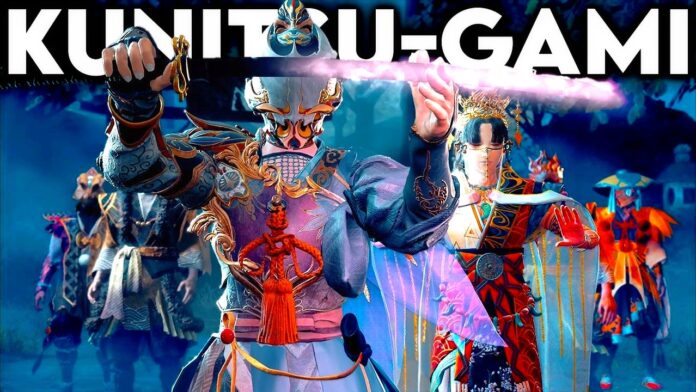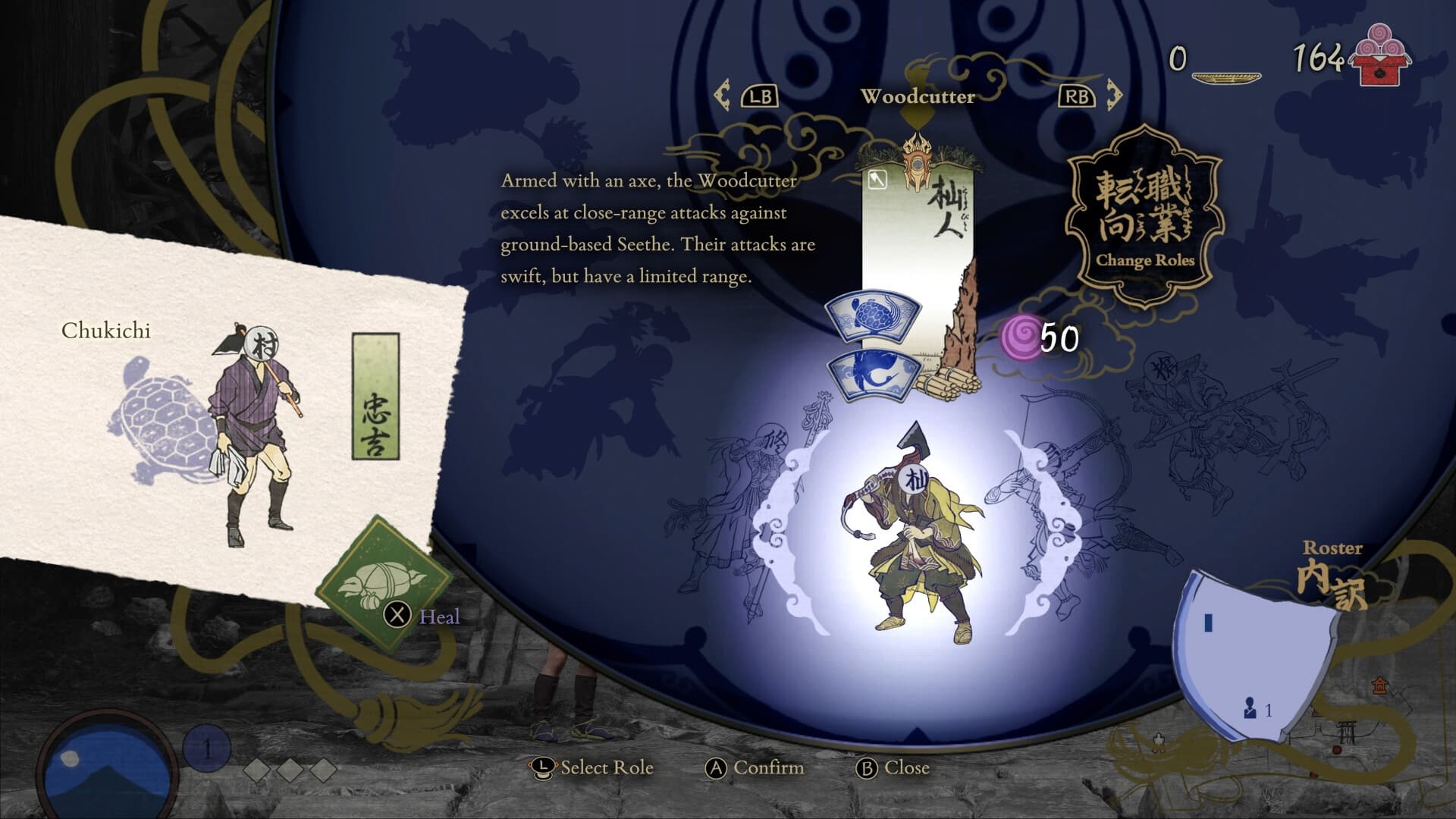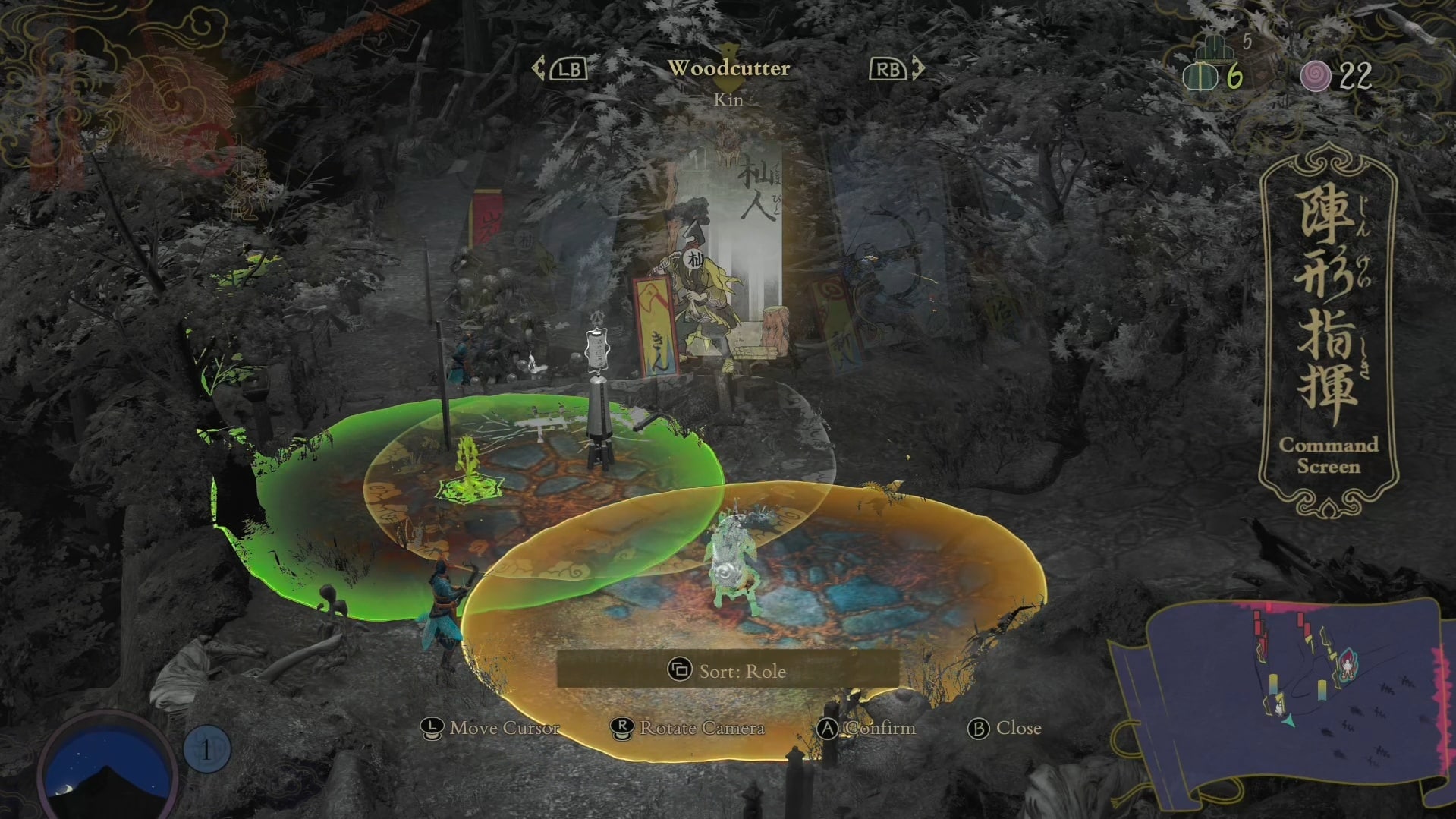Capcom’s new foray into the Japanese world of ghosts will be released in mid-July. We’ve already been able to try out the game and tell you what it was like
What do old Japanese shrine dances have to do with katana sketches?At first glance, not much. However, if you take a closer look, you can discover a few overlaps between the two themes.
Both originate from the land of the rising sun; both require years of practice to fully master. And if you believe veteran fencing instructors like Syrio Forel from Game of Thrones, swordplay is ultimately just a sophisticated form of dancing – only with a potentially fatal outcome.
Apparently Capcom also thought that the two go together perfectly.In its new action gameKunitsu-Gami: Path of the Goddessthe studio wants to combine ancient Shinto dances with action-packed samurai gameplay and sends you 18 years afterOkamiback into the Japanese world of the gods.
We were recently invited to a one-hour play event and can now tell you first-hand how real-time strategy fits into this game concept and how the genre mix works in Kunitsu-Gami. You can get a first impression for yourself in the following video
The desecration is spreading
The sacred mountain Kafuku, somewhere in Japan. On the slopes, the trees sway gently in the wind. People and animals live in harmony. But this comes to an abrupt end when a mysterious desecration befalls the land and steals the twelve divine masks from the shrine on the mountain top.
Banished from her sanctuary, the shrine priestess Yoshiro can only watch as the villagers are attacked and petrified by the desecration. Hordes of demons pour out of the red shrine gates. There’s only one thing to do: a warrior must be found to stop the damned and lead Yoshiro to the summit to perform a purification ritual.
And this is where we come in: In the skin of Guardian Soh, it’s our job to clear a path for Yoshiro through the desecration-infested levels and protect her from the onrushing hellish creatures during her nightly rituals.
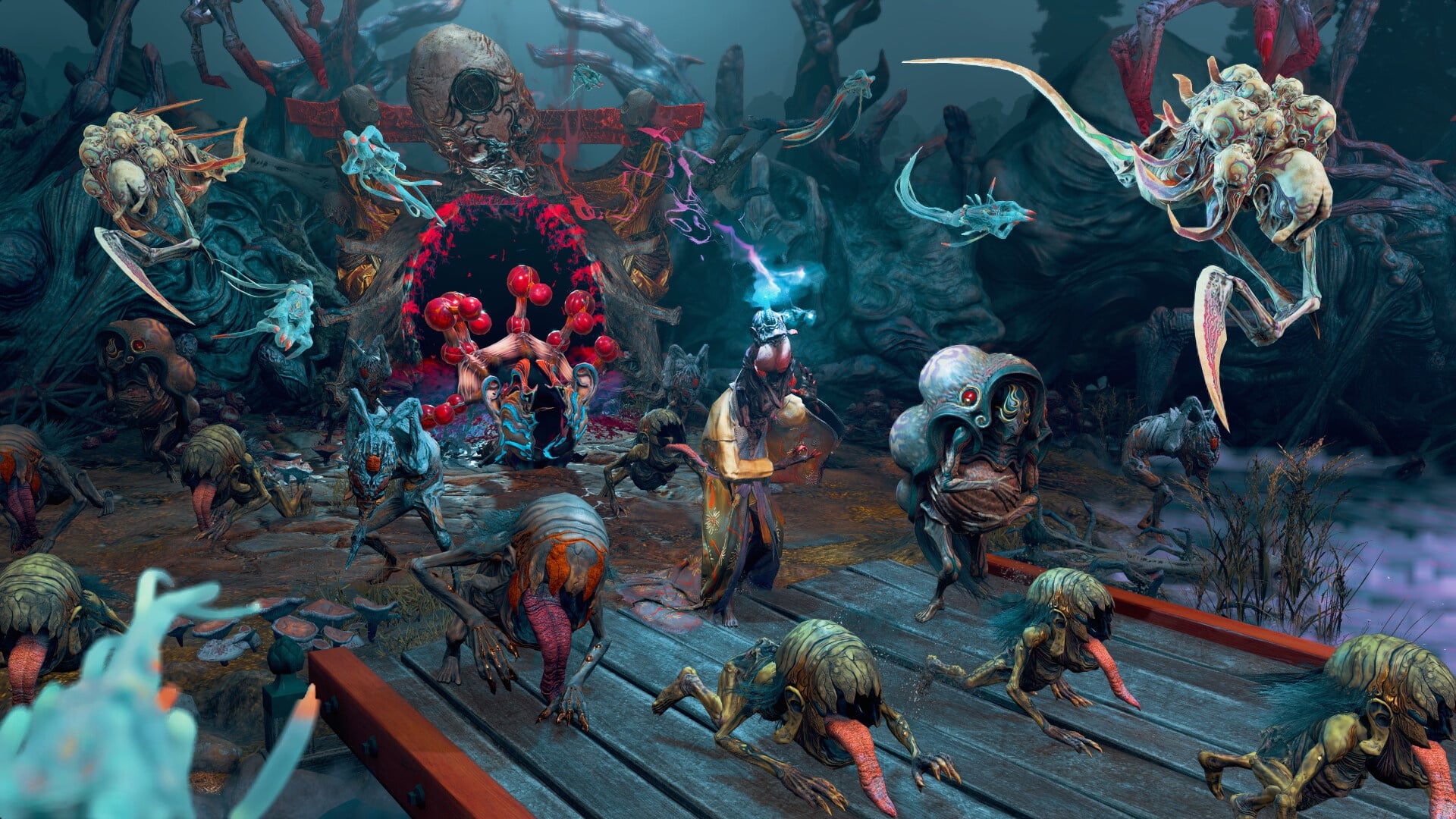
The clock is ticking
An essential gameplay element of Kunitsu-Gami is the day and night change, which provides two completely different gaming experiences. During the day, the monsters stay hidden thanks to the sunlight. So you take care of the ritual cleaning of the surrounding villages.
You use the Shinto swiffer on your katana to unseal cursed torii gates and free villagers from petrification. Once you have done this, you assign them roles and give orders to repair destroyed areas of the village.
You can also level up your character Soh in Priestess Yoshiro’s tent: You select various talismans and equip new thrusting blades for your katana, which improve your attack abilities. You can also view collectibles such as picture scrolls with mythological motifs here
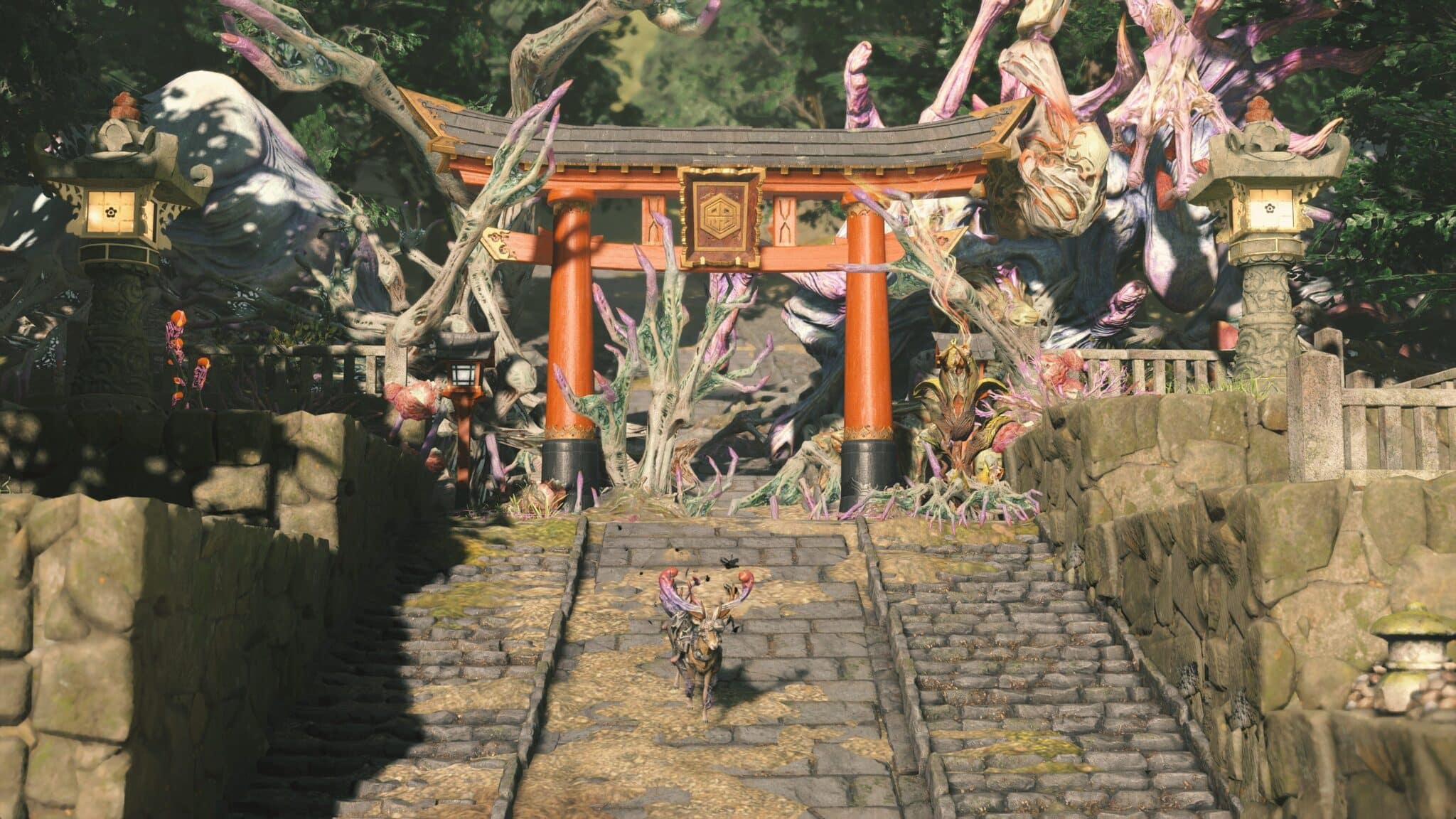
He who does not dance does not win
But it’s literally not all sunshine and roses in Kunitsu-Gami. Because on the clock in the bottom left-hand corner of the screen, the sun is moving relentlessly westwards, heralding the beginning of night – and with it the appearance of Yokai
During the night, Priestess Yoshiro performs a purification dance to send the demons back to hell and close the portal to the afterlife. Meanwhile, we make sure that Yoshiro survives her dance unscathed and reaches the nearest shrine gate alive by defending her against the monsters.
Let’s get one thing straight from the start:The good woman dances extremely slowly and is not even fazed by the drooling hordes of demons. So the nightly waves call for stamina above all else.
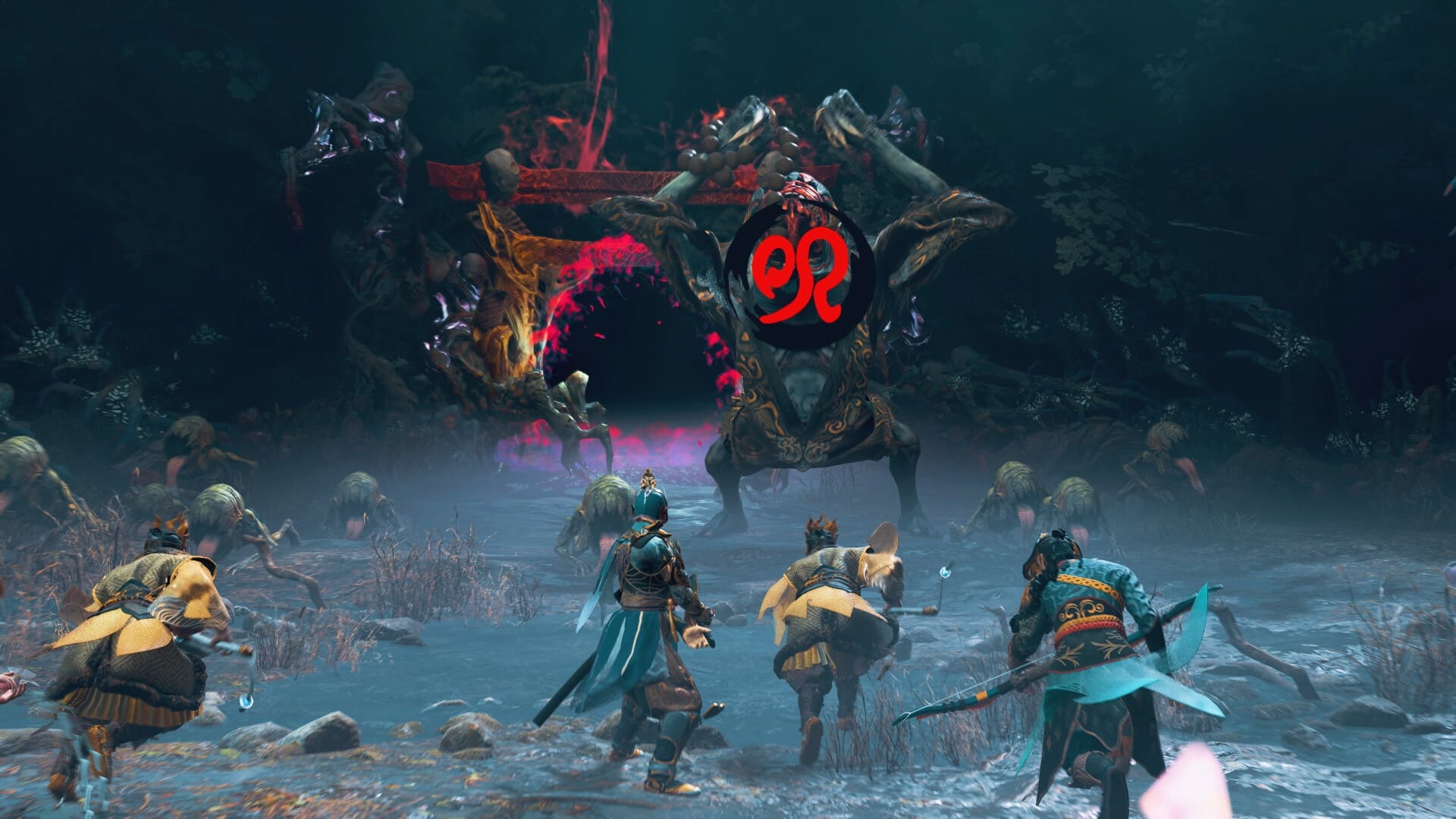
Kagura: The dances in Kunitsu-Gami are inspired by the JapaneseKaguraa ceremonial dance performed at Shinto shrines in honor of the gods. A priestess, the so-called miko, moves to the rhythm of the music during kagura, swinging a branch or a jingle stick. Wooden masks are often worn during these shrine dances.
Fights between strategy and stumbling
The nocturnal enemies confront us either in waves that rush towards us or in the form of a powerful intermediate boss. In both cases, however, the battles are largely the same.
In the action-heavy part of the combat system, we deal with the hellish hordes directly with Soh’s katana. We combine normal strikes with dancing special attacks to create combos that not only deal a lot of damage, but also look stylish. We’ll have weaker opponents filleted in no time at all.
Overall, however, the heavy combat feels rather utilitarian. Although there is the option to roll, it is very imprecise. Without a sensible dodge move, the otherwise well-balanced boss fights turn into a series of wild jumps to escape the enemy’s blows
The katana is not our only weapon, however:In command mode, we can assign fixed roles and, above all, positions on the battlefield to the villagers rescued during the day, just like in a real-time strategy game. The battles pause for this long. The tactical placement of units also lends Kunitsu-Gami a touch of the tower defense genre.
For example, if we want to protect a staircase on the way to Yoshiro from the demons, we can tactically place some archers at the top. We cover the lower steps with swordsmen. If we have commissioned the carpenter to build obstacles or defenses during the day, it pays off now
In boss battles, tactical commands such asYoshiro defend
orAll on the boss
are added. In places, however, the passages in command mode are a little lengthy
There are supposed to be twelve different villager classes in Kunitsu-Gami, all of which come with different weapons and abilities. We unlock these by defeating bosses and recovering stolen masks
As in the real-life model Kagura, the masks embody certain roles:The thief, for example, can find buried treasures, but is largely useless in battle. The woodcutter, on the other hand, is a good all-rounder, especially at the start of the game. We can upgrade the classes during the day with Priestess Yoshiro
Kunitsu-Gami: Path of the Goddess will be released on July 19, 2024for PC, PlayStation 4 and 5 as well as Xbox One and Series X/S. If you want to take a look at the action title for yourself before release, you can download a free demo version from Steam now
Editor’s verdict
Basically, Kunitsu-Gami has exactly the right elements to entice me, as a die-hard Japan enthusiast, out from behind the stove. With the buzzwords Shinto, Yokai and Katana, I can’t help but rub my hands together with excitement
The first visual impression of Kunitsu-Gami is also solid. Although the game is also being released for Xbox One and PlayStation 4, despite their advanced hardware age, the lovingly designed villages and shrines are visually impressive. The flora and fauna in places of desecration in particular are wonderfully strange and colorful
My concern is more about the battle system. The katana passages play pleasantly snappy – Soh’s dance moves with the sword are wonderfully whirling and eye-catching. But Kunitsu-Gami is not a real samurai game. The lack of rolls and lunges is too conspicuous. So don’t expect a complex combat system like in Ghost of Tsushima
The real-time part – in most cases a cool feature that brings a lot more tactical depth to the game – can also become unpleasantly convoluted in places. In some night battles, we are not allowed to fight ourselves, but only win the battles with the help of the villagers, whom we order around in command mode. These passages cause hiccups in the otherwise pleasant flow of the game
I can’t yet give a definitive answer to the question of whether Capcom has achieved the ambitious genre mix it was aiming for with Kunitsu-Gami. My playing time has been too short for that so far. But the team at Capcom has the right ingredients for it

